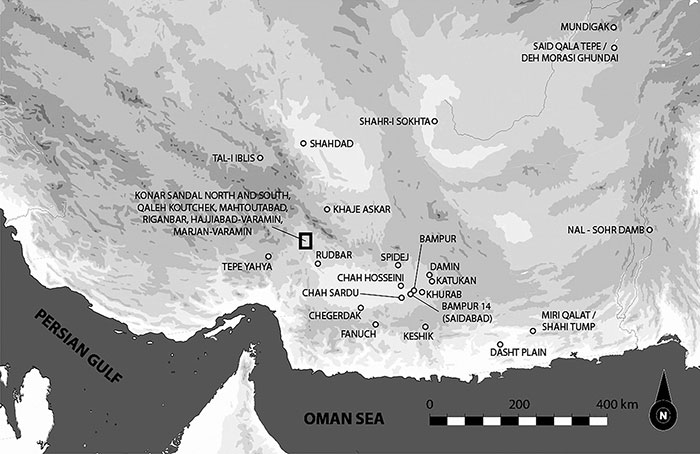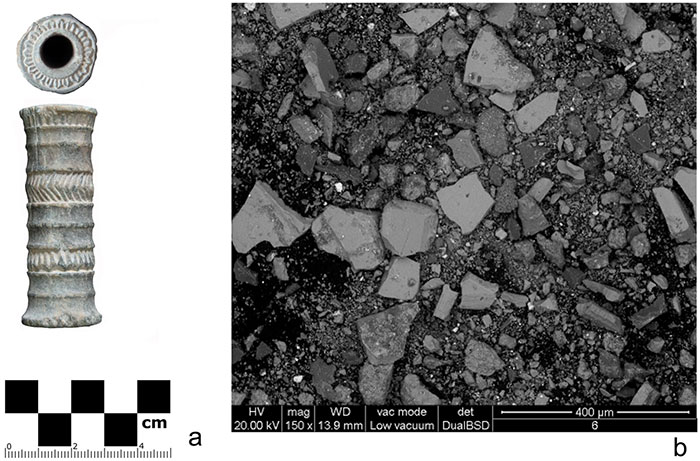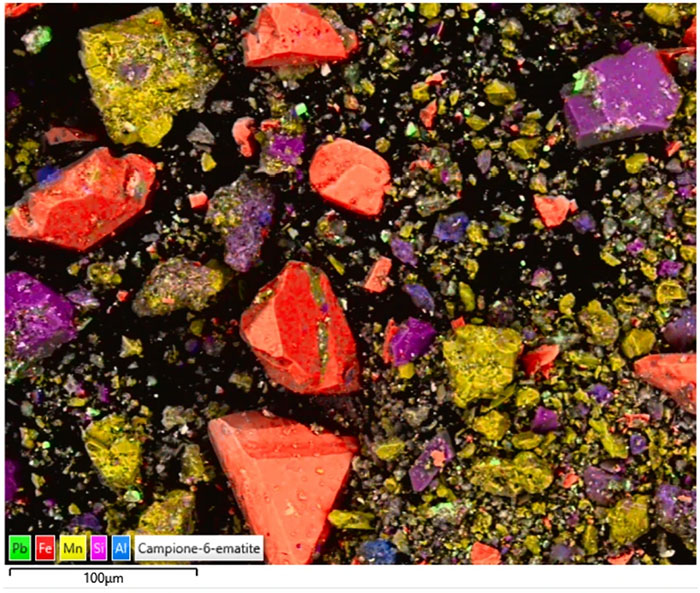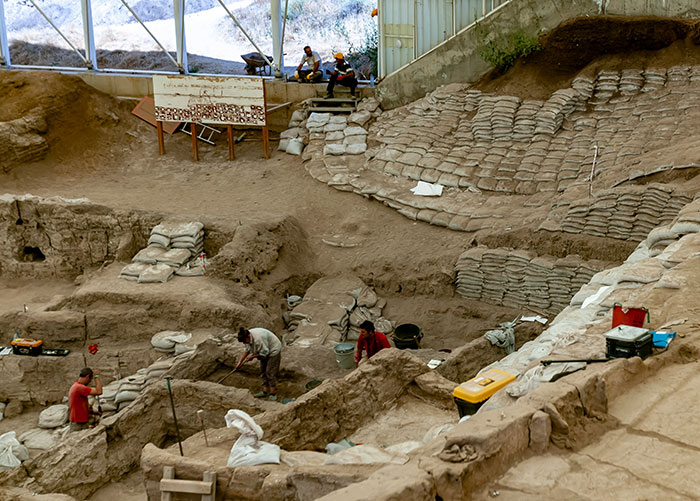Have we just found the predecessor of the lipstick?
Archeologists found a small chlorite vial discovered among numerous artifacts looted and recovered in the Jiroft region of Kerman province, southeastern Iran, containing a deep red cosmetic preparation that is likely a lip-coloring paint or paste.
Through analytical research involving the use of X-ray diffraction, scanning electron microscopy-energy-dispersive spectroscopy, and high-performance liquid chromatography-mass spectrometry, the researchers were able to conclude that the mineral components of the reddish substance were identified as hematite, darkened with manganite and braunite, and traces of galena and anglesite, mixed with vegetal waxes and other organic substances.
The mixture bears a striking resemblance to the recipes of contemporary lipsticks, the archeologists explained in their discovery published in Scientific Reports.
“So far, for the world of 5000-4000 years ago, we knew about makeup recipes, eyeliners, and eye shadows but not about lip paints,” Massimo Vidale, a professor of archaeology at the University of Padua in Italy, and one of the discovery’s authors, told Bored Panda in an email.
Archeologists discovered a chlorite vial in Iran containing a deep red cosmetic preparation, which could be the predecessor of today’s lipstick

Image credits: F. Desset
From the late Chalcolithic to early Bronze Age (approximately 3500–1800 BCE), cosmetics have been the subject of a growing number of analytical studies, which have unveiled previously unknown techniques of elaboration and chemical processing, the archeologists wrote.
In Egypt, Anatolia, Iran, and Mesopotamia, prehistoric stone flagons containing similar substances have been commonly found.
Nevertheless, the apparent complexity of the early Iranian recipes might have been influenced by the availability of diverse metal ores in the central Iranian Plateau. This might suggest that the population could create more sophisticated cosmetic products.
The discovery may now contribute to a better understanding of social hierarchies during the identified historical period.
“The substance, in itself, is very elaborated,” Professor Vidale explained. He continued: “It presupposes an in-depth knowledge of the chemical processing and behaviors of iron and manganese compounds, of the effects of finely ground quartz as a shining component, and of oil, waxes, and possibly urea that might have been added as moisturizing and exfoliating agents.
“All this requires specialized knowledge that might have been built up only in centralized workshops managed and kept alive by the elites.”
Chemical analysis revealed hematite, manganite, braunite, galena, anglesite, vegetal waxes, and other organic substances in the mixture

Image credits: M. Vidale, F. Zorzi
In early urban societies with social hierarchies, the practice of burying cosmetic containers with the deceased indicated the importance of presenting a particular social image or persona even after death.
The act of including cosmetics in burial contexts may imply that people believed that these constructed identities would persist beyond death, regardless of the individual’s gender or identity.
“The more people, with the development of social ranks and hierarchy, had to impersonate official roles, the more cosmetics became crucial,” Professor Vidale said.
“This is true for life, meaning for official ceremonies, and for death, because men and women, most probably, had to appear in very formal ways also during funerals,” he added.
Unfortunately, thousands of graves of the Jiroft civilization were destroyed by illegal diggings, making it impossible to conclusively identify variations in beauty practices across different social classes or age groups.
Professor Vidale said: “In the burial grounds of Shahr-i Sokhta, in the Iranian Sistan, it seems that men, too, were buried with their cosmetic flagons, but perhaps it is still too early to propose sound conclusions.”
“So far, for the world of 5000-4000 years ago, we knew about makeup recipes, eyeliners, and eye shadows but not about lip paints,” one of the authors told Bored Panda

Image credits: F. Zorzi
So far, most of the cosmetic preparations analytically identified in the ancient Near East and Egypt were white or light-colored compounds used as foundations or eye shadows and were mostly based on wet-processed lead or black kohl eye-liners, the authors wrote in their paper.
However, the deep red pigments used for coloring lips identified by the archeologists had not been successfully identified or documented before, as the red pigments are notably missing from existing records or inventories of ancient cosmetic materials.
Professor Vidale revealed: “Lip-coloring cosmetics were totally unknown, and the Jiroft civilization, although discovered 20 years ago, is still largely a historical mystery.
“We do not even know whether males or females might have used these preparations because the graveyards of this civilization have been mass-looted and destroyed in 2000-2001.”
The Jiroft or Halil Rud civilization of ancient Iran is believed to be the likely ancient polity of Marḫaši mentioned in Mesopotamian cuneiform texts (ancient writings found in the region of Mesopotamia).
The civilization flourished in a valley formed by tectonic activity, providing access to diverse lithic resources, such as metamorphic rocks, diorites, granites, and volcanic ashes.
The small cylindrical vial containing the lip paint was discovered among many valuable artifacts in stone and copper that were recovered by Iranian security forces and eventually ended up in the Jiroft Archaeological Museum and other public collections at Kerman and Tehran.
Although the precise provenience of the recovered findings will remain unknown, both the unmistakable style and the coherent assemblages confidently ascribe the greatest majority of the recovered lots to the local early Bronze Age civilization, therefore, to ancient Marḫaši, the archeologists wrote.
Despite limited historical records, the find in Iran suggests an early development of cosmetic practices predating those of ancient Egypt

Image credits: Fernando Cesar Cordoba
Marhaši was a 3rd millennium BC polity situated east of Elam, on the Iranian plateau, in Makran.
The researchers described the vial as a greenish, compact chlorite schist with a style compatible with that of hundreds of other Jiroft chlorite artifacts. Moreover, its specific size and shape are distinct and unlike any other similar object currently known.
According to the authors, the association between such a peculiar form and its unusual content potentially supports the idea that cosmetic products in ancient times were branded, packaged, and traded in standard types of containers with specific forms allowing for easy visual identification, as is the practice in contemporary perfumes and cosmetic industries.
The discovery is a trait of “modernity” linked to the display of luxury and superior status by the emerging Bronze Age elites, the historians noted.
The vial’s slender shape and limited thickness suggest that ancient civilizations were just like us, as it allowed for a person to conveniently hold it in one hand together with the handle of a copper/bronze mirror, leaving the other hand free to use a brush or another kind of applicator.
There are no historical records or depictions highlighting the role of cosmetics in enhancing people’s beauty in the Jiroft region, as 4000 to 5000 years ago, people had very limited use of writing, and iconography rarely focused on similar issues or contingency.
The civilization responsible for the lipstick-like vial, likely the Jiroft or Halil Rud civilization, remains largely mysterious due to extensive looting

Image credits: Hulki Okan Tabak
“To find images of women painting their lips, we have to go to the much later context of ancient Egypt: the earliest image of a woman applying red to her lips dates back to a papyrus painted around 1300-1200 BCE,” Professor Vidale explained.
Nevertheless, the researchers seem to suggest that Iran is where lipstick might’ve been invented.
“As far as we presently know, Bronze Age Iran provides the earliest evidence of this invention,” Professor Vidale said.
He also cautioned: “But archaeologists well know that every time one claims to have discovered the earliest evidence of something, very soon another article claims an earlier find.
“Thus, experience suggests a very careful attitude.”
“I love history,” a reader commented


















 English (US) ·
English (US) ·